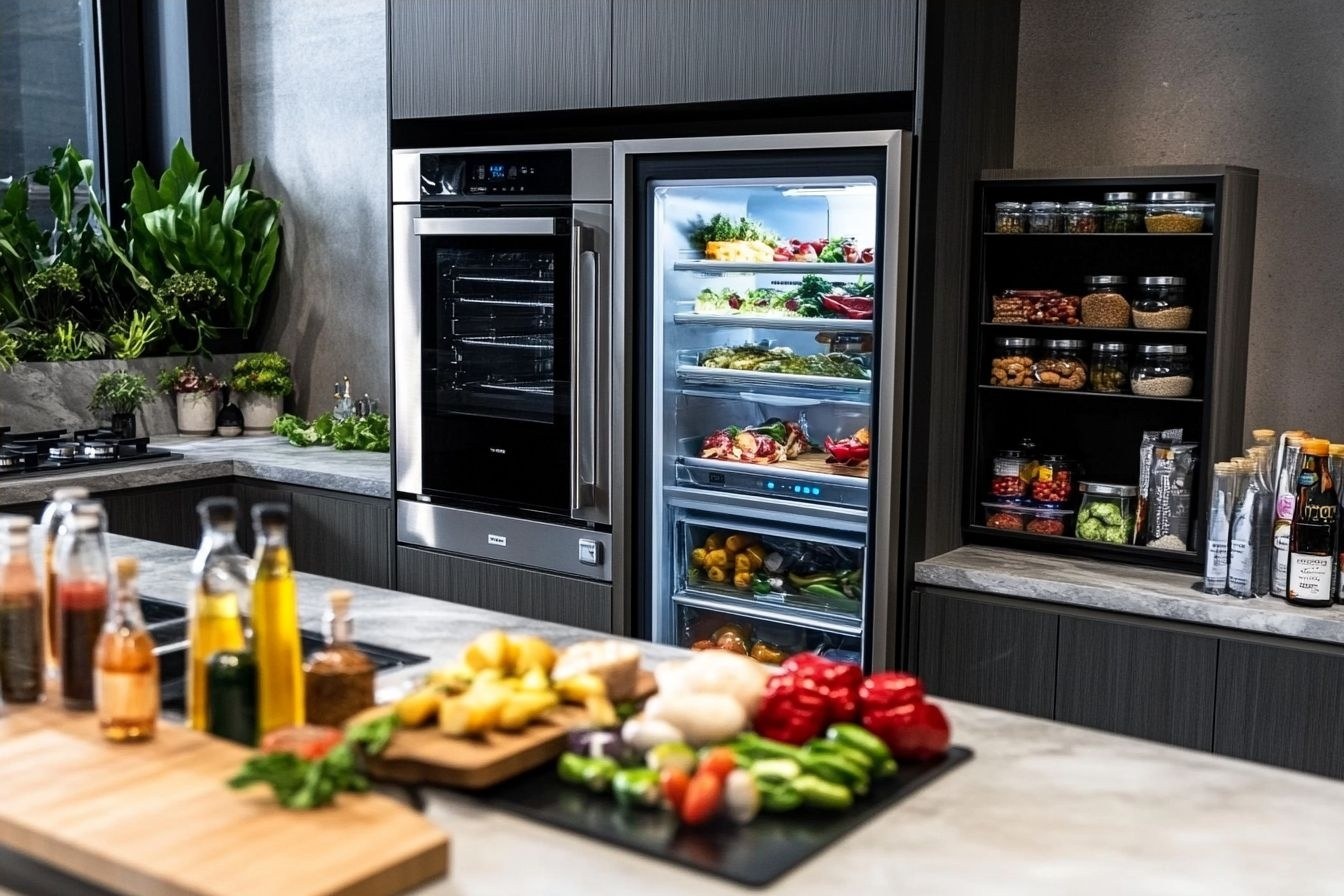Selecting Hygiene-Friendly Surfaces for Regular Food Handling
Choosing surfaces for a kitchen used for regular food handling affects safety, efficiency, and long-term care. This article outlines practical guidance on material selection, countertop layout, storage strategies, and maintenance that support hygienic mealprep and reduce contamination risks in home and commercial settings. It focuses on durable materials, organized workflows, and environmental considerations.

How do materials affect hygiene-friendly surfaces?
Material choice drives how easy a surface is to clean, how resistant it is to bacteria, and how it stands up to repeated food contact and cleaning agents. Non-porous materials such as stainless steel, certain engineered quartz, and food-grade solid surfaces resist staining and do not trap moisture or food particles. Natural stone like granite can be hygienic if sealed and maintained, but porous wood requires specific finishes and regular care to avoid harboring microbes. When evaluating materials, consider scratch resistance, chemical compatibility with sanitizers, and whether the surface tolerates frequent hot and wet cleaning.
What to consider for countertops and islands?
Countertops and islands are primary work zones for mealprep; their surface finish and edge design influence cleanliness. Rounded edges and integrated sinks reduce crevices where food debris and bacteria can accumulate. Seamless installations or fewer joints simplify cleaning. For islands used as multi-use zones, choose wear-resistant materials that are easy to sanitize between tasks. Consider the countertop height and depth as part of ergonomics to minimize cross-contamination caused by awkward reaching or cluttered work areas. Include a durable surface near cooking and a separate, easy-to-clean zone for prepping raw ingredients.
How does layout, workflow, and ergonomics influence hygiene?
A thoughtfully planned layout reduces unnecessary movement and potential cross-contamination. Arrange the kitchen so raw food prep, cooking, and plating follow a logical sequence: storage to prep to cook to serve. Ergonomics—counter heights, reachable storage, and clear sightlines—cut fatigue and accidents, helping staff and home cooks maintain clean practices. Workflows that position sinks, cutting surfaces, and waste bins close together but separated from ready-to-eat zones support safe handling. Use tactile and visual cues, such as color-coded boards or designated prep areas, to reinforce sanitary routines within the layout.
What storage and organization choices support cleanliness?
Proper storage reduces spoilage and contamination risk. Closed, easy-to-clean cabinets and drawers keep utensils and ingredients protected from splashes and pests. Shelving with smooth, washable surfaces and adjustable layouts supports organized stock rotation, while labeled containers improve hygiene in busy kitchens. Design storage so frequently used items are within easy reach to avoid cluttered countertops. For perishables, ensure refrigeration units are accessible and maintain correct temperatures; for dry goods, choose airtight containers to reduce moisture and insect exposure. Clear organization speeds cleaning and reduces accidental cross-use of tools.
How do lighting and ventilation impact food handling?
Good lighting improves visibility for safe cutting, thorough cleaning, and spotting spills or food residues that can harbor bacteria. Task lighting over prep surfaces, islands, and sinks supports precision work and inspection of food quality. Ventilation removes cooking fumes, steam, and grease that can settle on surfaces and encourage microbial growth; it also improves air quality for staff. Choose hoods and filters sized correctly for the cooktop and maintain them regularly. Combined, adequate lighting and ventilation shorten drying times and make routine sanitation more effective.
What maintenance and sustainability practices help surfaces last?
Regular maintenance prolongs the hygienic life of surfaces. Establish cleaning protocols that specify suitable detergents and disinfectants for each material, frequency of deep cleaning, and methods to address stains or scratches. Routine inspections catch wear that could create crevices for contamination. Sustainability considerations include selecting durable materials that need fewer replacements, low-VOC finishes, and recycled-content options. For mealprep zones, balance eco-friendly cleaners with efficacy—choose products verified for food-contact safety. Proper upkeep reduces waste, lowers long-term costs, and helps maintain consistent hygiene standards.
Conclusion
Selecting hygiene-friendly surfaces for regular food handling requires balancing material properties, layout and workflow, storage and organization, and ongoing maintenance. Prioritize non-porous, durable materials in primary prep areas, design ergonomic and logical traffic flows, and ensure adequate lighting and ventilation. Consistent cleaning protocols and sensible storage choices round out an approach that supports food safety, efficiency, and longer surface life.
This article is for informational purposes only and should not be considered medical advice. Please consult a qualified healthcare professional for personalized guidance and treatment.





